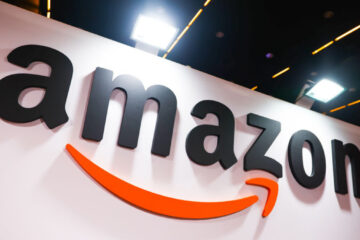The supply chain bottlenecks impacting the semiconductor industry have started to ease.
Several companies using semiconductor chips, including automakers, estimate improvements from supply chain disruptions by the third or fourth quarter
The bottlenecks have waned as consumer demand has pulled back and China has reopened its factories.
The chip shortage that impacted the industry is starting to show signs of improvement, Logitech (LOGI) – Get Logitech International S.A. Report CEO Bracken Darrell said during its earnings call.
“We are not over it, but the symptoms are getting milder,” he said. “We will be free and clear in the third quarter, or in the worst case, the fourth quarter.”
Several semiconductor companies reported earnings already, reflecting increased sales and an improvement in supply chain issues that have plagued the industry due to the global pandemic, Thomas Hayes, chairman of Great Hill Capital in New York, told TheStreet.
Both Taiwan Semiconductor Manufacturing (TSM) – Get Taiwan Semiconductor Manufacturing Company Ltd. Report and NXP Semiconductors (NXPI) – Get NXP Semiconductors N.V. Report reported their automotive chip business rose by 14% year-over-year and 36% year-over-year, respectively.
NXP reported the company earned $2.53 a share on revenue of $3.31 billion in the June quarter, beating estimates from analysts. The company’s earnings increased by 78% while sales rose by 28% year-over-year. It estimates revenue will rise by 20% to $3.425 billion for the current quarter.
In one key sign, automotive manufacturer GM maintained its full-year guidance and production despite setbacks during the second quarter with China’s shutdowns.
“They cannot book revenue without shipping cars to dealers and cannot ship cars to dealers without chips,” Hayes said.
More Chips Could Beat Back Inflation
“The chips have started to flow in the last few weeks,” Hayes said. “As we fulfill the backlog in new cars, used car prices will come down hard, which is a key component in the Consumer Price Index (CPI).”
Demand has fallen in the consumer sector as people are purchasing fewer computers and smartphones, but remains higher for cars, SUVs and trucks.
“The decline in demand for PC and electronics has opened capacity to begin to meet auto demand,” he said. “The huge backlog for auto demand can now start to get filled. GM sounds pretty confident it will.”
The automotive sector, which saw its production of vehicles limited by the lack of semiconductor chips, said the challenges fell within their estimates, GM CFO Paul Jacobson said during its earnings call.
“We had a level of confidence about the chip supply as we gave our guidance for 2022,” he said. “It didn’t mean that it was over. In fact, we highlighted that we’d still see some challenges and we have seen challenges but largely been in line with our expectations for the year.”
The Problem Isn’t Over Yet
The previous issues impacting the semiconductor industry have started to ease, including both supply and demand, Angelo Zino, an equity analyst at CFRA, a New York-based investment research company, told TheStreet. There are some pockets of constraint as NXP reported demand outstripping supply.
“Things are definitely improving from some of the severe supply conditions in 2021,” he said. “The question is to what extent NXP has visibility in a broader macro landscape and how much it continues to slow down.”
Demand “continues to outpace our gradually and incrementally improving supply capability,” Kurt Sievers, NXP’s CEO said during its earnings call.
“Furthermore, even as we actively de-risk our existing backlog for potential double or any stale orders, we judge supply to only address approximately 80% of the underlying demand,” he said. “When looking at customer inventory, we continue to see a dysfunctional supply chain, which struggles to get the right product mix and complete kits to the correct location in the extended automotive and industrial markets.”
The semiconductor industry could face potential headwinds if the inventory of cars winds up greater than the amount of demand as affordability becomes an issue due to interest rate hikes, if there is another bout of covid issues or if the Chinese government enacts more shutdowns, Zino said.


